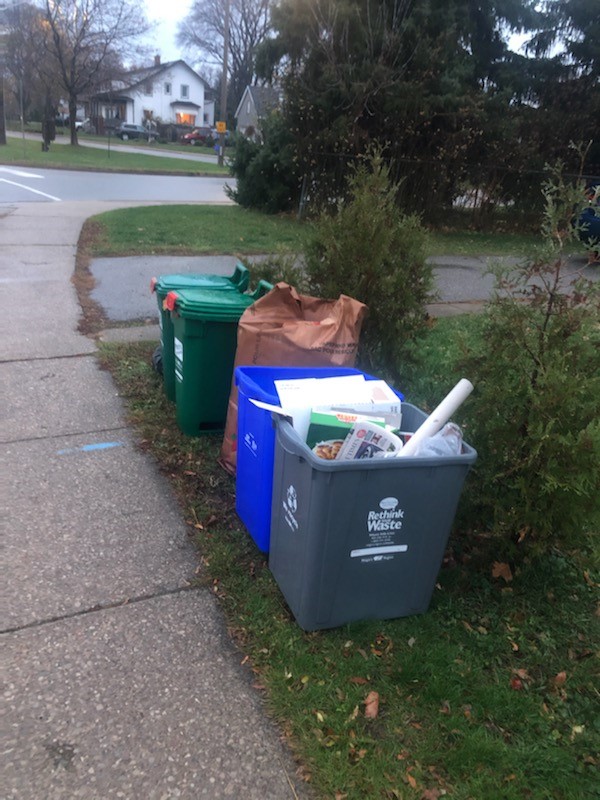 Do you ever wonder what happens to your waste once it is picked up from your bins? Asking ourselves this on a regular basis is an important part of understanding how our actions are part of a complex problem that municipalities are working to resolve. Last week, we discussed the benefits of the new waste collection schedule for the Niagara Region. These benefits include the reduction of Green House Gases (GHG) as well as a decrease in both the amount of pollutants that leach into the environment and the amount of land required to bury our garbage. But how does this translate to action, and how can we make this shift to reduce our black bin (or garbage bin) use easier?
Do you ever wonder what happens to your waste once it is picked up from your bins? Asking ourselves this on a regular basis is an important part of understanding how our actions are part of a complex problem that municipalities are working to resolve. Last week, we discussed the benefits of the new waste collection schedule for the Niagara Region. These benefits include the reduction of Green House Gases (GHG) as well as a decrease in both the amount of pollutants that leach into the environment and the amount of land required to bury our garbage. But how does this translate to action, and how can we make this shift to reduce our black bin (or garbage bin) use easier?
As humans, we are social beings and are influenced by the actions of others. Our neighbours’ habits can impact our own, often without us even realizing it. If you see that your neighbours are shovelling their sidewalk when it snows, you are more likely to want to get out and shovel yours. The same goes for recycling and composting — if you believe your neighbours regularly recycle, you are more likely to do so yourself. Convenience and over-consumption are among of the biggest barriers to overcoming waste challenges. It is easy to not think about your waste because in a week or two, it will be off your property. The negative impacts of improper waste management extend beyond your curb, however. Although your waste might be out of sight and out of mind after collection day, the impacts of that waste extend beyond the local level, having global implications that continue long after it has been emptied from your bins.
One way to begin changing your habits is to challenge yourself to use your recycling and compostable bins more frequently. The best way to do this is by tracking what you put in the garbage each day. After trying it out for a week, you may catch yourself putting waste in the wrong place!
Here are some tips for helping reduce the waste in your black bin or bag:
- Buy items in bulk (some stores may not allow you to bring your own containers during the pandemic, but typically, you can bring a reusable container)
- Re-use your plastic bags, or better yet, use containers or re-usable beeswax wraps (see our creative kitchen blog post)
- Remind yourself to choose the alternative with less packaging while shopping (buying fresh fruits and vegetables that don’t come in plastic wrap, for example)
- Tape a reminder near your garbage can that will prompt you to think about whether your item truly belongs in the trash, or if it could be recycled or composted, instead
- Educate yourself and your family members by using the ‘Where does it go?’ tool on the Niagara Region’s website. You simply type in any item that you you no longer want (from pizza boxes to empty laundry detergent jugs) and it will tell you which bin it goes in
- Only buy what you truly need
If you are a new homeowner or renter, the Region provides you with free containers for your waste, recycling, and compost! If you have been living in your dwelling for more than a year, you can still purchase containers or use other acceptable alternatives. Having a bin for each of the waste streams will set yourself up for success.
Ontario’s zero waste goals will require collective efforts from everyone across the province. These goals include a 50 per cent waste diversion rate (that is, non-garbage material into green, blue or grey bins instead of black bins) by 2030 and a 80 per cent diversion rate by 2050. The Niagara Region can be a leader in this effort—starting with you and the actions you take in your home. When we take on more responsibility for our consumption and waste practices, we are doing our part to reduce greenhouse gas emissions while making our communities more sustainable for us all.
 Back to myNiagaraOnline
Back to myNiagaraOnline































